Pumpkin Pecan Babka is a rich, cake-bread hybrid with pumpkin puree and crunchy pecans swirled throughout its buttery interior. The fermented dough gives the cake/bread more depth of flavor. The filling adds creaminess and crunchy texture at the same time. You’ll fall head over heels for its beauty and taste. Even more so when you see how freezer-friendly this recipe is. It’s perfect for the chillier fall or winter seasons.
*This post is an update from the original, which I published in October 2018. The article and images are new. I’ve also eliminated the maple-cinnamon glaze from the main recipe but included it in the recipe notes section.*
What Is Pumpkin Pecan Babka?
Babka is a cake/bread hybrid from the Slavic regions of Europe. The name babka comes from the pet name for grandmothers in many Slavic and Jewish languages, like the Yiddish: “Bubbe,” Slovak: “Babička,” Slovenian: “Babica,” and Polish “Babka.” Clearly, babka is a comforting recipe if it’s named after grandma.
Babka started from the leftovers of challah bread. The remnants of the braided, Jewish ceremonial bread served on Shabbat were weaved with fillings like chocolate or poppy seeds to create babka.
This babka weaves a creamy pumpkin and crunchy pecan schmear between buttery-rich dough to form a beauty of a loaf the grandma would be proud of.
Why Is A Sponge Beneficial in Bread?
The first step in making babka is creating the dough sponge. The pre-ferment sponge method gives the yeast in the recipe a chance to work without it having to compete with a ton of other ingredients. This sponge method also gives your finished babka a deeper flavor because the alcohol produced by the fermenting yeast becomes more intense in flavor as the babka dough develops.
To make a sponge for your babka, you need bread flour, active dry yeast, whole milk (warmed to 110°F or 43°C), and honey.
Do I Have to Use Bread Flour in This Recipe?
Bread flour is the preferred flour to use when making this pumpkin pecan babka. It has a higher percentage of protein which means it develops the right amount of gluten, which leads to the right amount of chew in your baked babka.
Yes, you can replace the bread flour with all-purpose flour if you absolutely must, but you’ll find that the babka will not hold together as proper bread should.
Use a rubber spatula to stir the bread flour, active dry yeast, warmed milk, and honey until a thick paste forms. Cover the bowl and place it in a warm, draft-free area of the kitchen. I like to put my sponge in the microwave or an oven that’s turned off.
Allow the sponge to begin fermenting and rising for 30 minutes.
What Do I Need to Make the Babka Dough?
To make babka dough, you need bread flour, the sponge you fermented earlier, soft unsalted butter, room-temperature eggs, sugar, and kosher salt.
You need a stand mixer for this recipe unless you have the arm strength to knead this dough by hand. An electric (hand) mixer won’t work here because this dough becomes too stiff for its motor.
How Long Does Babka Dough Have to Knead?
Add the starter, eggs, sugar, and one cup (135 grams) of bread flour to the bowl of your stand mixer. Use the paddle attachment to blend the ingredients together at 2nd speed until they form a thick paste.
Once a thick paste forms, add another cup (135 grams) of bread flour to the bowl.
Once the mixer starts to sound like it’s lagging, stop the mixer, scrape down the paddle attachment and switch it out for the dough hook. Scrape down the sides of the bowl. Blend in the remaining cup of bread flour along with the kosher salt. Leave the 1/2 cup of bread flour for later to use in case the dough is too sticky. Gradually add the butter, two tablespoons at a time, while the mixer runs at low speed.
After you add the last of the butter, start a timer for 10 minutes. Knead the babka dough for a full 10 minutes to develop the gluten in the dough.
How Long Does the Dough Need to Rise?
Remove the bowl from the mixer stand after kneading the dough for 10 minutes. Pull off the dough that’s climbed onto the hook. At this point, the sides and bottom of the bowl should be clean, and the dough will have gathered into a ball. If not, add more bread flour to the bowl and knead it for 5 more minutes.
Remove the dough from the mixer bowl and lightly grease the bowl with softened butter, canola oil, or vegetable oil. Use your hands to mold the babka dough into a ball, then put it into the greased bowl and turn it over. Greasing the surface of the dough prevents skin from forming on the dough. That skin will later crack and make its way into your perfectly smooth dough.
Next, cover the bowl with a clean kitchen towel. Set the covered bowl into a warm, draft-free area (80°F/26°C is optimal) and allow the dough to rise for one hour or until doubled in bulk. It usually takes an hour for the dough to proof, or rise, until doubled in bulk.
How Do I Make the Filling For the Pumpkin Pecan Babka?
Make the pumpkin pecan schmear while the babka dough proofs.
Add the pumpkin puree, crushed pecans, brown sugar, pumpkin spice blend, and kosher salt to a 2-quart mixing bowl, preferably one with a lid.
How Far Ahead Can I Make It?
Use a rubber spatula to stir the contents of the bowl together until combined. Once the schmear is made, cover the bowl and refrigerate it until you’re ready to use it.
You can make the pumpkin pecan schmear for your babka 2 days ahead and store it, covered, in the fridge.
What Does Retarding Dough Mean and What Does It Do?
Once the babka dough has doubled in bulk, punch it down to dispel and redistribute the gasses built up in the dough. You can continue with the make-up of the pumpkin pecan babka now or give it more flavor by retarding the dough.
Return the dough to the bowl and flatten it slightly. Place a layer of plastic film directly onto the dough’s surface. Cover the bowl with another layer of plastic film, then refrigerate the dough for 8-12 hours. This process is called retarding the dough. Retarding, in the baking realm, means you’re slowing down the proof or rise of the dough. Retarding dough is done for many reasons, but here, you’re doing it to give more flavor to your babka.
Pressing the dough down decreases its bulk, so it chills before it can rise too much. That layer of plastic placed directly on the surface of the dough prevents skin from forming.
Retard the dough overnight, if possible, or for at least 8 hours.
How Do I Form the Pumpkin Pecan Babka?
Remove the dough from the fridge if you’ve retarded it. Lay it onto a floured surface and use a rolling pin to roll it out into a 24 x 12 inches (60 x 30 centimeters).
Use an offset spatula to spread the pumpkin pecan schmear over the surface of the dough. Try not to scrape the schmear too much because the nuts will cause it to leave patches if you do so. Instead, smooth it over the dough lightly but evenly.
Use both hands to roll the dough into a cylinder. Try to roll it pretty snugly by pulling back on the tube as you roll it up.
Once you have your tube, use a very long, very sharp carving knife to cut the tube in half down the middle.
To form the babka, twist the two halves together, making sure the cut layers are facing up and exposed. Pinch the two loose ends together and fold them under to keep the twist from unraveling.
What Is “Proofing” Dough and How Long Do I Need to Do It?
Transfer the formed babka to a lightly greased one-and-a-half-pound bread loaf pan lined with parchment paper. Make sure the layers are up in the pan.
Cover the pan with a clean kitchen towel and allow it to proof in a warm environment for 1 hour and 15 minutes if the dough was retarded. If not, you only need to proof the dough for about 45 minutes to 1 hour.
Proofing is the second rise of the dough after you shape it. It just continues the fermentation of the yeast and gives the baked bread a lighter texture and better volume. Proofing continues until the yeast is killed in the oven, so it’s important not to overproof the dough.
Cold dough must proof longer than warm dough. Hence the need to proof retarded dough longer than warm dough. Allow the dough to proof until it looks swollen and puffy.
Why Do I Have to Egg Wash My Pumpkin Pecan Babka?
While the dough proofs, prepare the egg wash for your pumpkin pecan babka.
Whisk together one large egg yolk and 1 tablespoon of cold water until smooth and free of clumps. Set this aside while the babka continues to proof.
Brush a generous layer of the egg wash over the proofed dough before you bake it. Egg washes give a shiny exterior to baked goods and add to their color.
How Long Do I Bake the Bread?
Bake the pumpkin pecan babka for 1 hour 15 minutes in a 350°F (180°C) oven. After 45 minutes of baking, turn the pan 180 degrees to ensure it bakes evenly. If you notice the bread becoming too dark, lightly cover it with aluminum foil and continue baking it. The babka must bake for the entire time, or the inside will not bake completely and will end up doughy.
Remove the babka from the oven after an hour and allow it to cool inside the pan for 10 minutes. Remove the loaf from the pan by pulling up on the parchment paper. Transfer the loaf to a cooling rack and cool the babka for 1 hour. This hour of cooling allows the structure of the babka to set up and complete its carryover baking.
When Do I Serve My Pumpkin Pecan Babka?
Babka is traditionally served as a dessert. You can serve it for breakfast, brunch, or as a snack, though.
Slice the pumpkin pecan babka once it’s completely cool and serve it as is. We enjoy our babka with hot cocoa or coffee.
How Do I Store Leftover Babka?
Store leftover pumpkin pecan babka in an air-tight container to keep it from growing stale. If you have a bread box, that’s perfect for storing the babka.
Babka keeps well at room temperature for 3 days. You can refrigerate babka for up to 5 days, but it may quickly become stale.
To give this pumpkin pecan babka a freshly baked taste, you can toast it in your toaster for 1 minute.
Can I Freeze the Pumpkin Pecan Babka After Baking?
You can freeze pumpkin pecan babka for up to 3 months. Allow it to cool completely, then slice it and wrap it in plastic film. I usually wrap the slices individually so we can grab one without having to thaw out the whole loaf. Once you’re ready to eat the babka, thaw it at room temperature and toast it slightly to heat it up.
This Pumpkin Pecan Babka is always a hit when I serve it to friends and family. Be sure to try it yourself, and let me know what you think of it in the comments below. Pin this recipe to your desserts (or bread) board, too, so you don’t lose it!
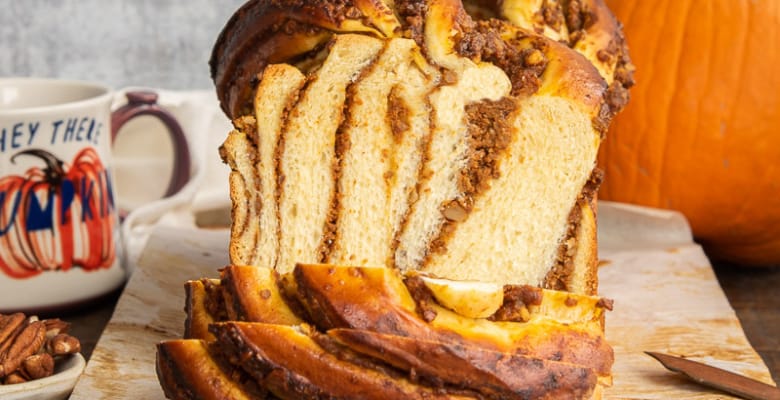
Pumpkin Pecan Babka
at Sense & EdibilityEquipment
- 1- 1 1/2 pound bread loaf pan (10 x 5 x 3 inches) link in post
- stand mixer
Ingredients
For the Sponge
- 1 cup (135 grams) bread flour
- 1/2 cup (120 milliliters) whole milk warmed to 110°F (43°C)
- 1 tablespoon (12 grams) active dry yeast
- 2 tablespoons (30 milliliters) honey
For the Babka Dough
- sponge
- 4 large eggs at room temperature
- 1/4 cup (50 grams) granulated sugar
- 3-3 1/2 cups (405-475 grams) bread flour
- 1 teaspoons (6 grams) kosher salt
- 1/2 cup (1 stick or 113 grams) unsalted butter sliced and softened
Pumpkin Pecan Schmear
- 1 cup (250 grams) pumpkin puree
- 1 cups (125 grams) pecans toasted and crushed (finely chopped)
- 1/3 cup, packed (75 grams) brown sugar
- 1 teaspoon (2 grams) pumpkin pie spice
- 1/8 teaspoon kosher salt
Egg Wash
- 1 large egg yolk
- 1 tablespoon (15 milliliters) cold water
Instructions
Prepare the Sponge
- In a 2-quart bowl, use a rubber spatula to stir the bread flour, warmed milk, active dry yeast, and honey until a thick paste forms. Cover the bowl and place it in a warm, draft-free area of the kitchen.Allow the sponge to begin fermenting and rising for 30 minutes.
Make the Babka Dough
- After 30 minutes, add the sponge, eggs, sugar, and one cup (135 grams) of bread flour to the bowl of your stand mixer. Use the paddle attachment to blend the ingredients together at 2nd speed until they form a thick paste.
- Add another cup (135 grams) of bread flour to the bowl. Once the mixer starts to sound like it's lagging, stop the mixer, scrape down the paddle attachment and switch it out for the dough hook. Scrape down the sides of the bowl.
- Blend in the remaining cup of bread flour along with the kosher salt. Reserve the remaining 1/2 cup of flour to add later in case the dough is sticky.Gradually add the butter, two tablespoons at a time, while the mixer runs at low speed. After you add the last of the butter, start a timer for 10 minutes. Knead the babka dough for a full 10 minutes to develop the gluten in the dough. If the dough pools at the bottom of the bowl, add the remaining flour.
Allow the Babka Dough to Rise for 1 Hour
- Remove the bowl from the mixer stand after kneading the dough for 10 minutes. Pull off the dough that's climbed onto the hook. At this point, the sides and bottom of the bowl should be clean, and the dough will have gathered into a ball. If not, add 1/2 cup more bread flour to the bowl and knead it for 5 more minutes.
- Remove the dough from the mixer bowl and lightly grease the bowl with softened butter, canola oil, or vegetable oil. Use your hands to mold the babka dough into a ball, then put it into the greased bowl and turn it over. Next, cover the bowl with a clean kitchen towel. Set the covered bowl into a warm, draft-free area (80°F/26°C is optimal) and allow the dough to rise for one hour or until doubled in bulk.
Make the Pumpkin Pecan Schmear
- Add the pumpkin puree, crushed pecans, brown sugar, pumpkin spice blend, and kosher salt to a 2-quart mixing bowl, preferably one with a lid. Use a rubber spatula to stir the contents of the bowl together until combined. Once the schmear is made, cover the bowl and refrigerate it until you're ready to use it.
Punch Down, the Retard the Babka Dough (Optional)
- Once the babka dough has doubled in bulk, punch it down to dispel and redistribute the gasses built up in the dough. You can continue with the make-up of the pumpkin pecan babka now (skip to Form the Babka Dough) or give it more flavor by retarding the dough.
- Return the dough to the bowl and flatten it slightly. Place a layer of plastic film directly onto the dough's surface. Cover the bowl with another layer of plastic film. Retard the dough in the refrigerator overnight, or for at least 8 hours.
Form the Babka Dough
- *Remove the dough from the fridge if you've retarded it.* Lightly grease a 1 1/2 pound bread loaf pan with baking spray and line it with a 5-inch strip of parchment paper. Set the pan aside. Lay it onto a floured surface and use a rolling pin to roll it out into a 24 x 12 inches (60 x 30 centimeters).
- Use an offset spatula to spread the pumpkin pecan schmear over the surface of the dough, smoothing it over the dough lightly but evenly.
- Use both hands to roll the dough into a cylinder, rolling it snugly by pulling back on the tube as you roll it up.Once you have your tube, use a very long, very sharp carving knife to cut the tube in half down the middle.
- To form the babka, twist the two halves together, making sure the cut layers are facing up and exposed. Pinch the two loose ends together and fold them under to keep the twist from unraveling.Transfer the formed babka to the prepared pan, making sure the layers showing in the pan.
Proof the Pumpkin Pecan Babka
- Cover the pan with a clean kitchen towel and allow it to proof in a warm environment for 1 hour and 15 minutes if the dough was retarded. If not, you only need to proof the dough for about 45 minutes to 1 hour. Allow the dough to proof until it looks swollen and puffy.
Prepare the Egg Wash
- While the dough proofs, whisk together the egg yolk and water in a small mixing bowl until it is smooth and free of clumps.Set this aside while the babka continues to proof. Lower the middle rack of your oven to the position beneath it. Preheat your oven to 350°F (177°C).
Bake the Pumpkin Pecan Babka
- Brush a generous layer of the egg wash over the proofed dough before you bake it. Bake the pumpkin pecan babka for 1 hour and 15 minutes, turning the pan 180 degrees after 45 minutes to ensure it bakes evenly. If you notice the bread becoming too dark, cover it lightly with aluminum foil and continue baking it.
Cool, then Enjoy the Pumpkin Pecan Babka
- Remove the babka from the oven after an hour and allow it to cool inside the pan for 10 minutes. Remove the loaf from the pan by pulling up on the parchment paper. Transfer the loaf to a cooling rack and cool the babka for 1 hour. Slice the pumpkin pecan babka once it's completely cool and serve it as is. We enjoy our babka with hot cocoa or coffee.
Notes
Swaps and Substitutions:
- Use all-purpose flour instead of bread flour. The babka won't be as chewy if you make this swap.
- Swap the pumpkin puree with sweet potato puree.
- Replace the pumpkin spice blend with chai spice blend instead.
- Use crushed walnuts instead of crushed pecans.
Optional Maple-Spiced Glaze:
- 1/2 cup (65 grams) powdered sugar, sifted
- 2 tablespoons (30 milliliters) maple syrup
- 1 tablespoon (15 milliliters) melted unsalted butter
- 1/2 teaspoon (1 gram) pumpkin spice blend
- whole milk as needed, to thin
- Use a whisk to combine all of the ingredients, except the whole milk, in a bowl until smooth.
- Add the milk, a few drops at a time, if needed, to thin to your preferred pouring consistency.
- Store leftover glaze in a covered container in the refrigerator.
Tips and Techniques:
- Use your microwave or oven (turned off) as a proofing box for your sponge and dough.
- You have to add the salt last because salt kills yeast. Adding it before this stage can cause your yeast to die, which means your babka dough won't rise properly or at all.
- Retarding the dough is not a must, but it adds exceptional flavor to your babka.
- Egg washes give a shiny exterior to baked goods and add to their color.
- The babka must bake for the entire baking time, or the inside will not bake completely and will end up doughy.
- Babka is traditionally served as a dessert. You can serve it for breakfast, brunch, or as a snack, though.
Make-Ahead Instructions:
- You can make the pumpkin pecan schmear for your babka 2 days ahead and store it, covered, in the fridge.
Storage Instructions:
- Store leftover pumpkin pecan babka in an air-tight container, like a bread box, at room temperature for 3 days.
- You can also refrigerate babka for up to 5 days, but it may quickly become stale.
- To give pumpkin pecan babka a freshly baked taste, you can heat it in your toaster for 1 minute.
Freezer Instructions:
- Allow the Pumpkin Pecan Babka to cool completely before slicing it.
- Wrap each slice individually so you can eat it without having to thaw out the whole loaf.
- Freeze the babka for up to 3 months.
- Thaw it at room temperature and toast it slightly to heat it up.

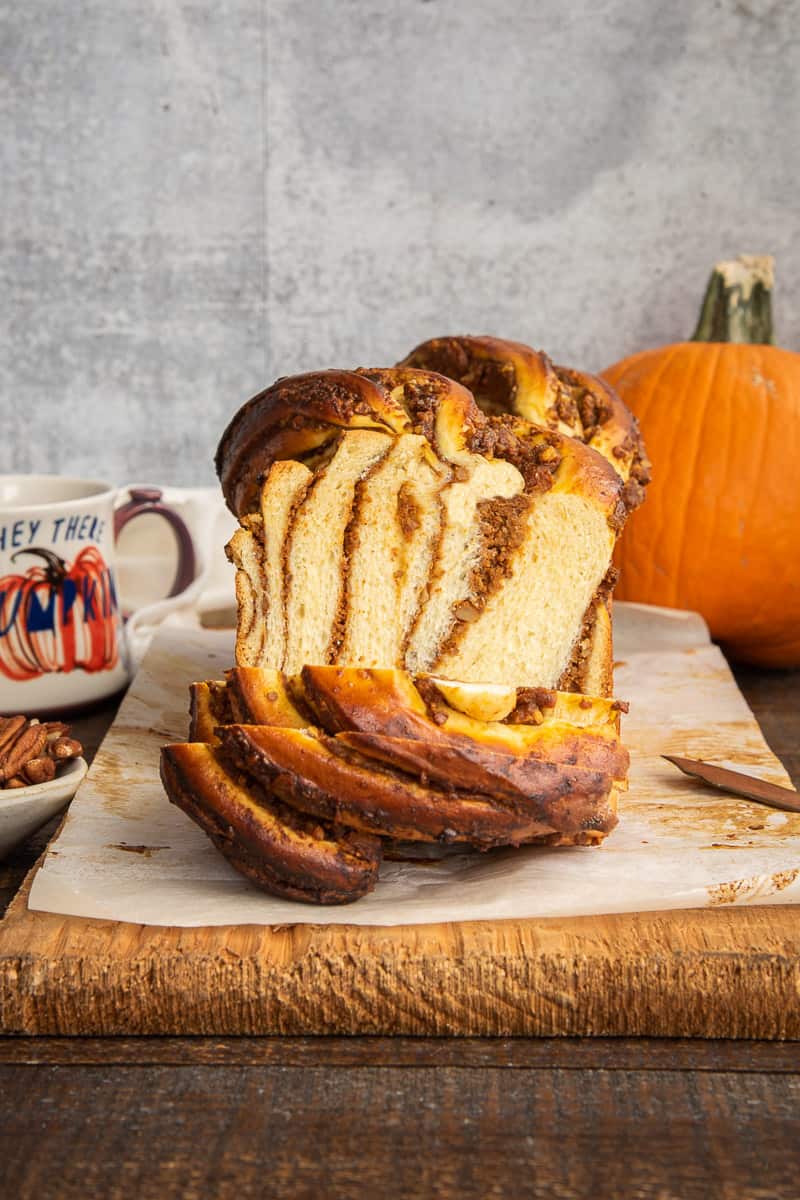
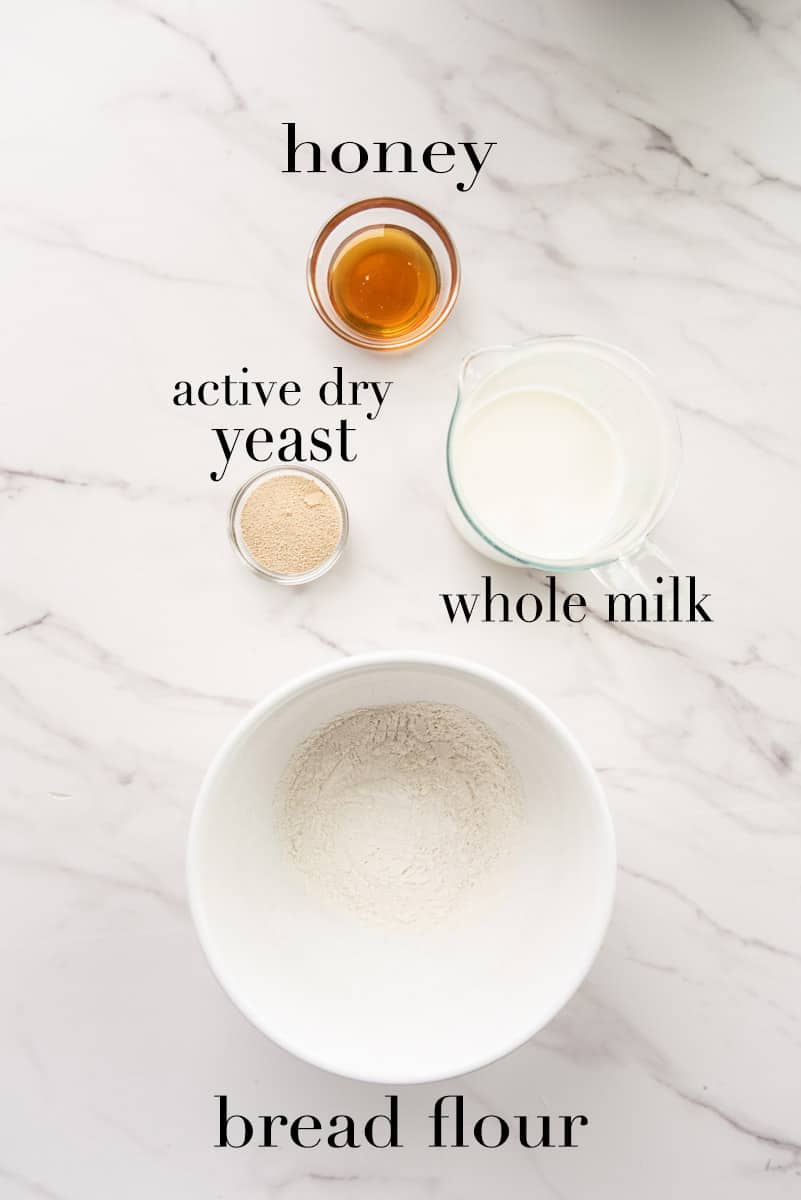
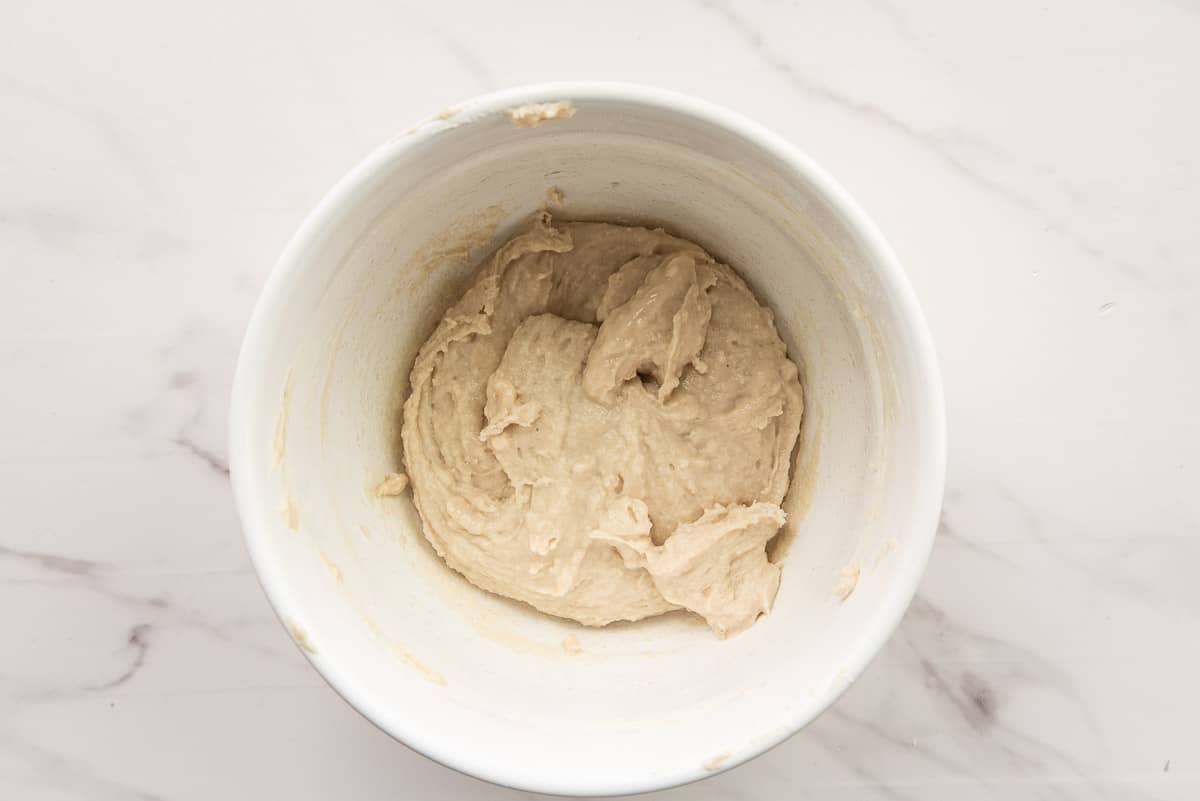
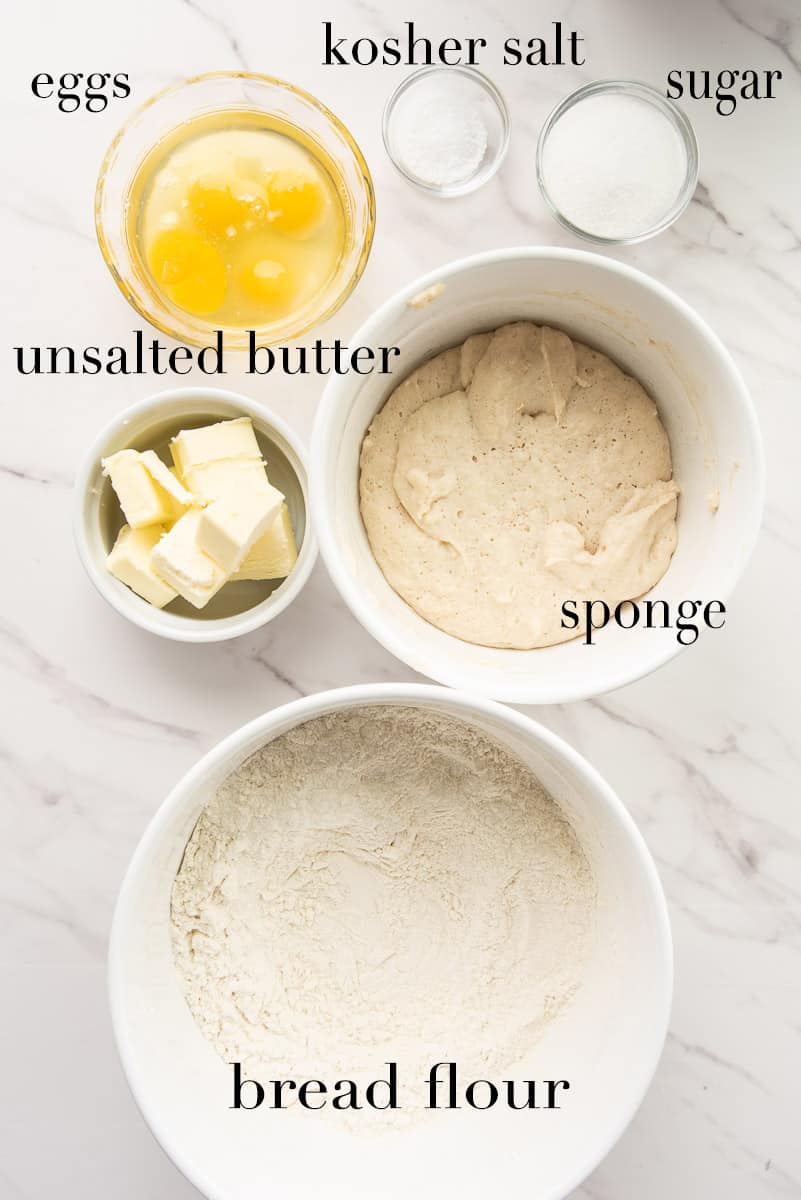
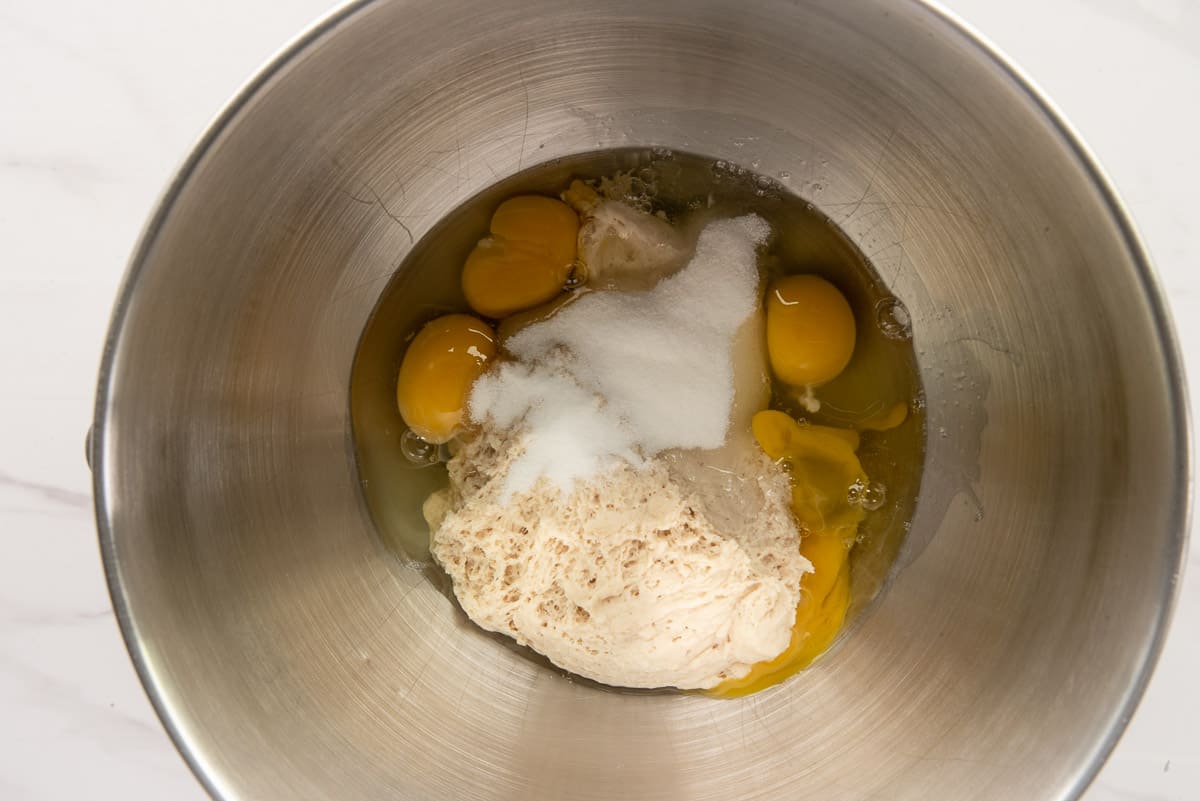
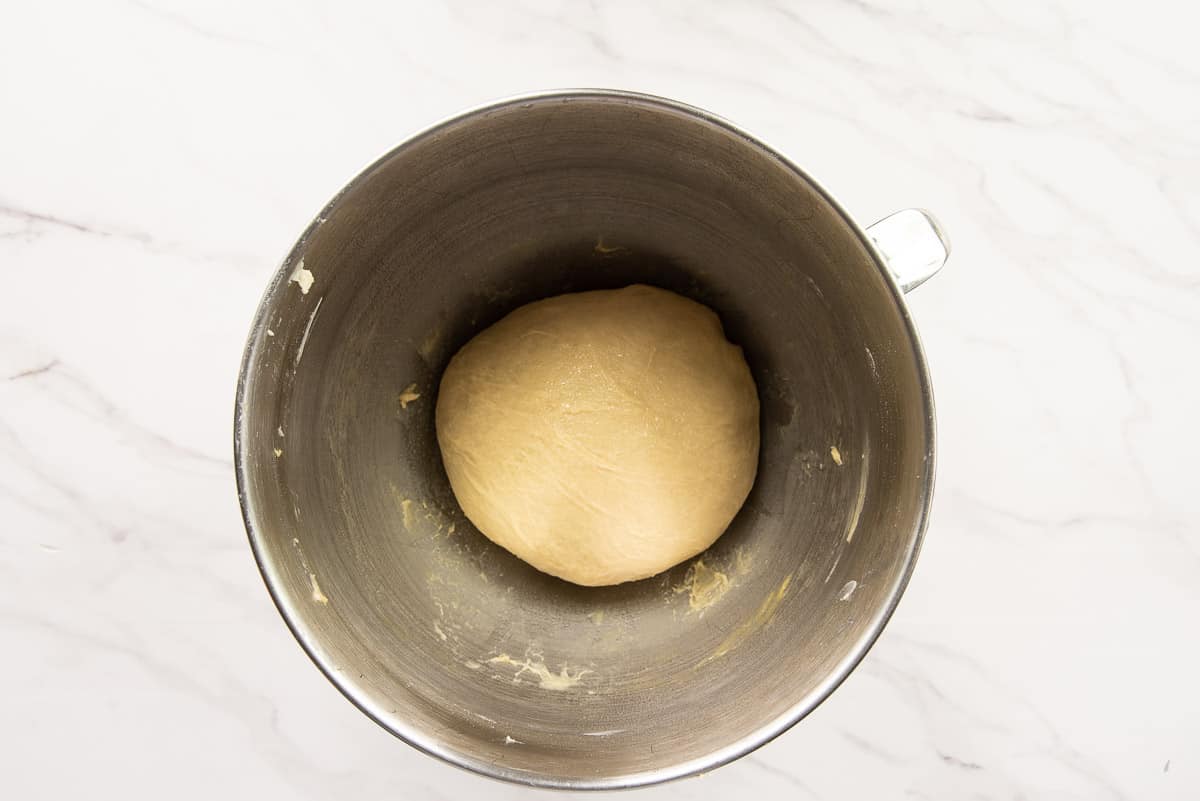
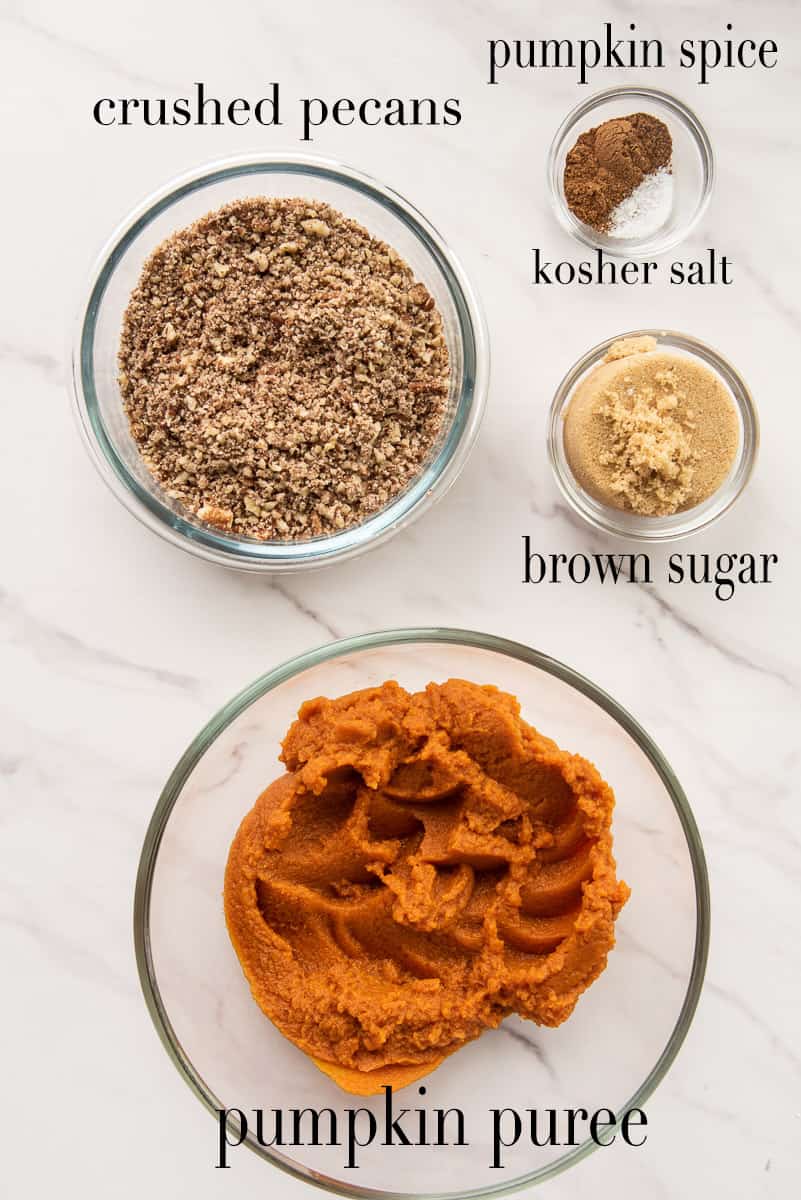
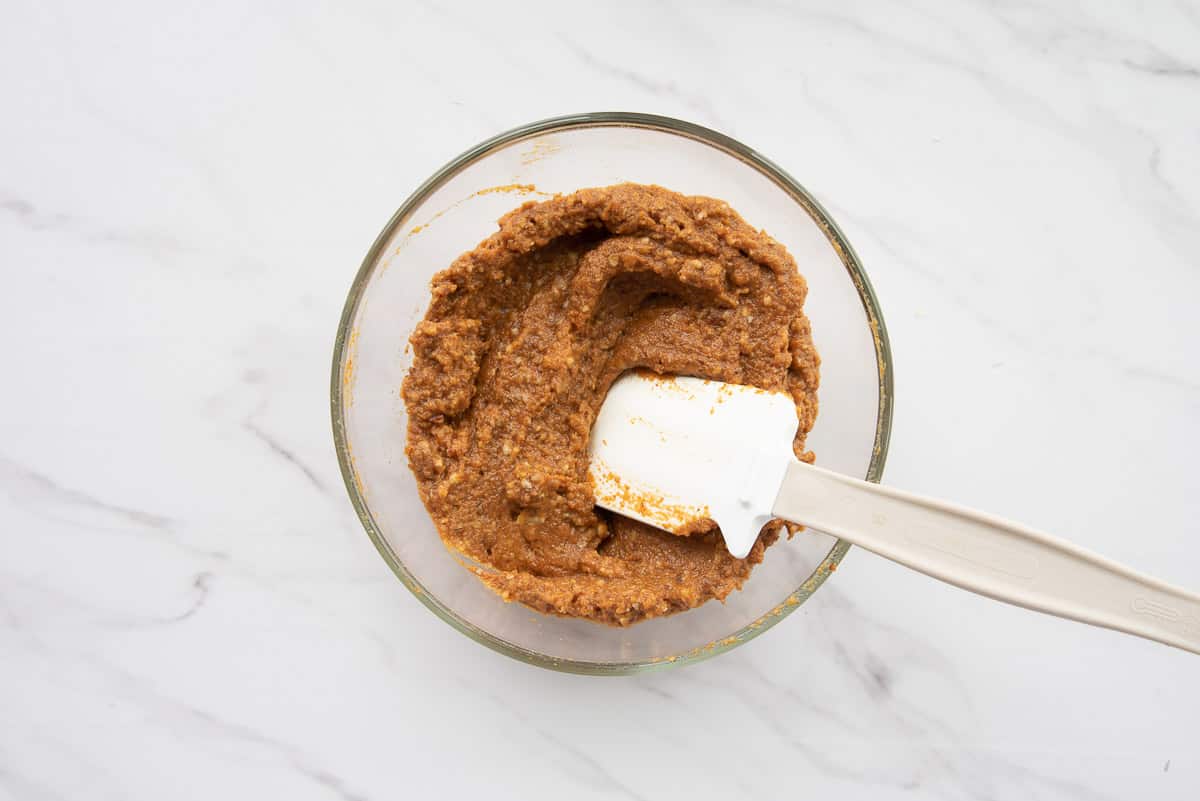
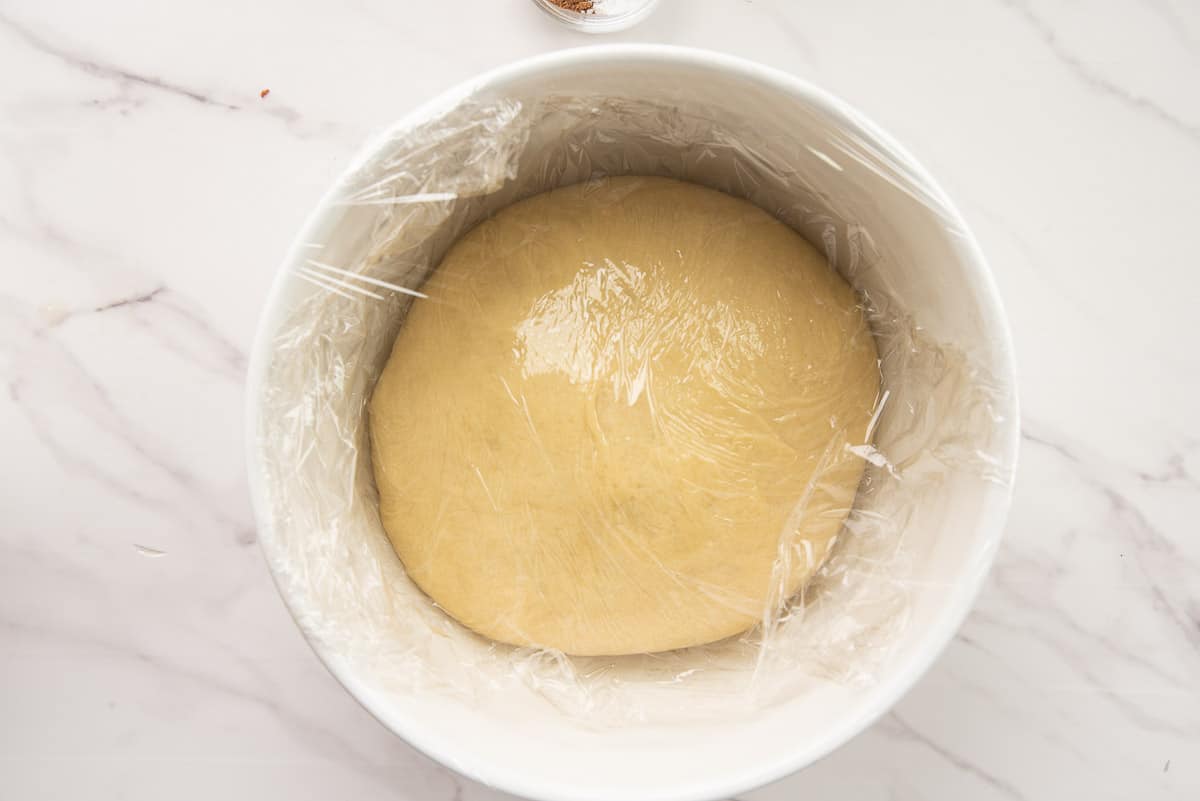
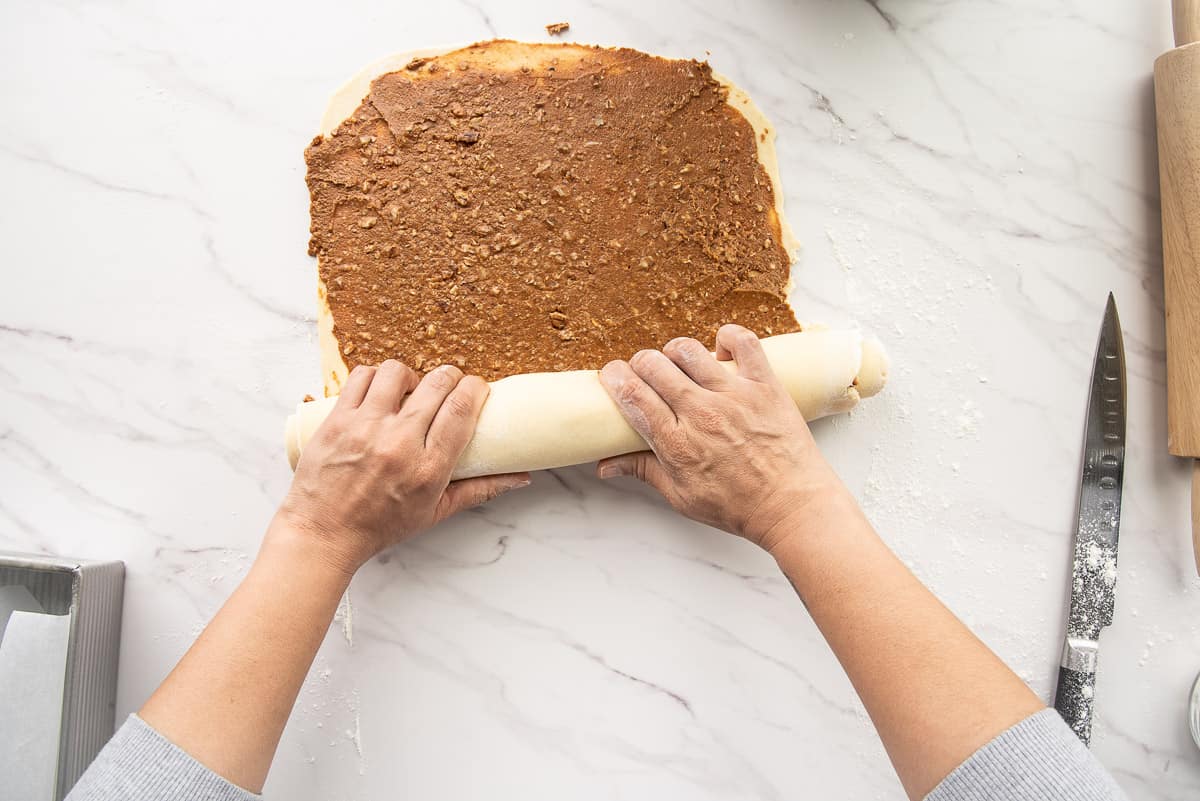
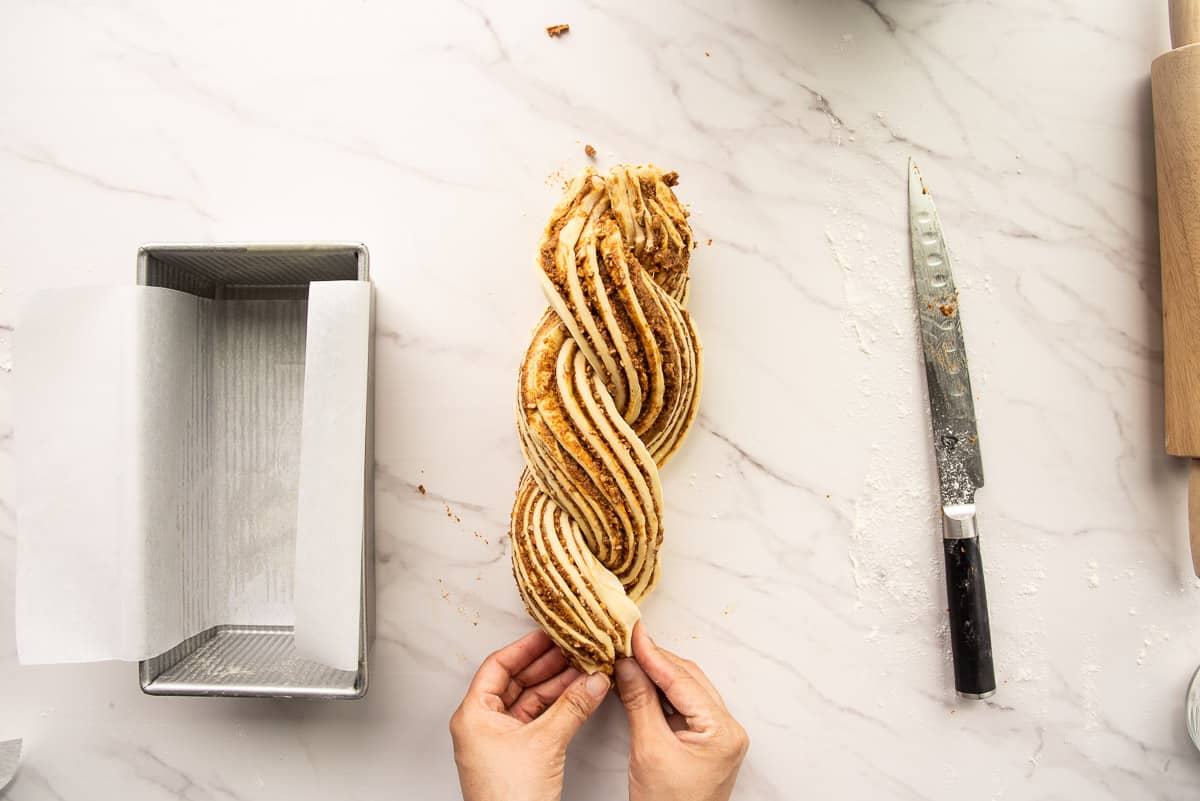
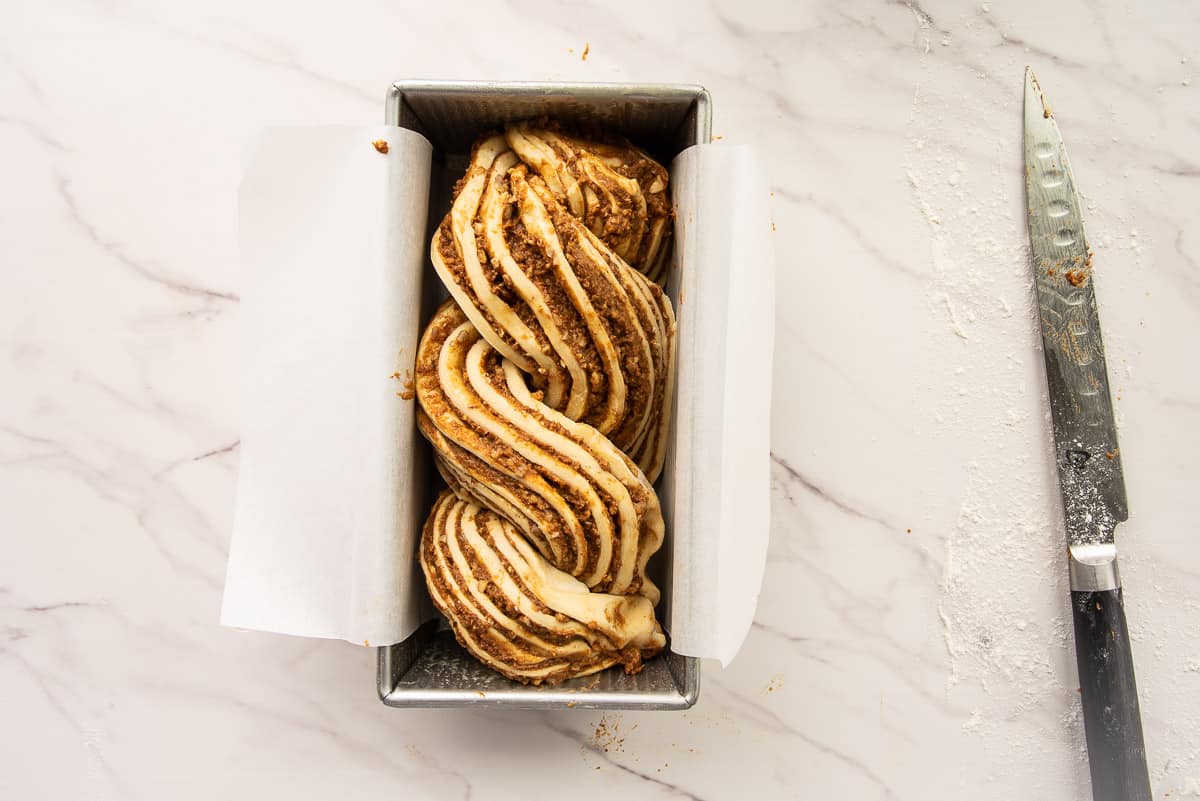
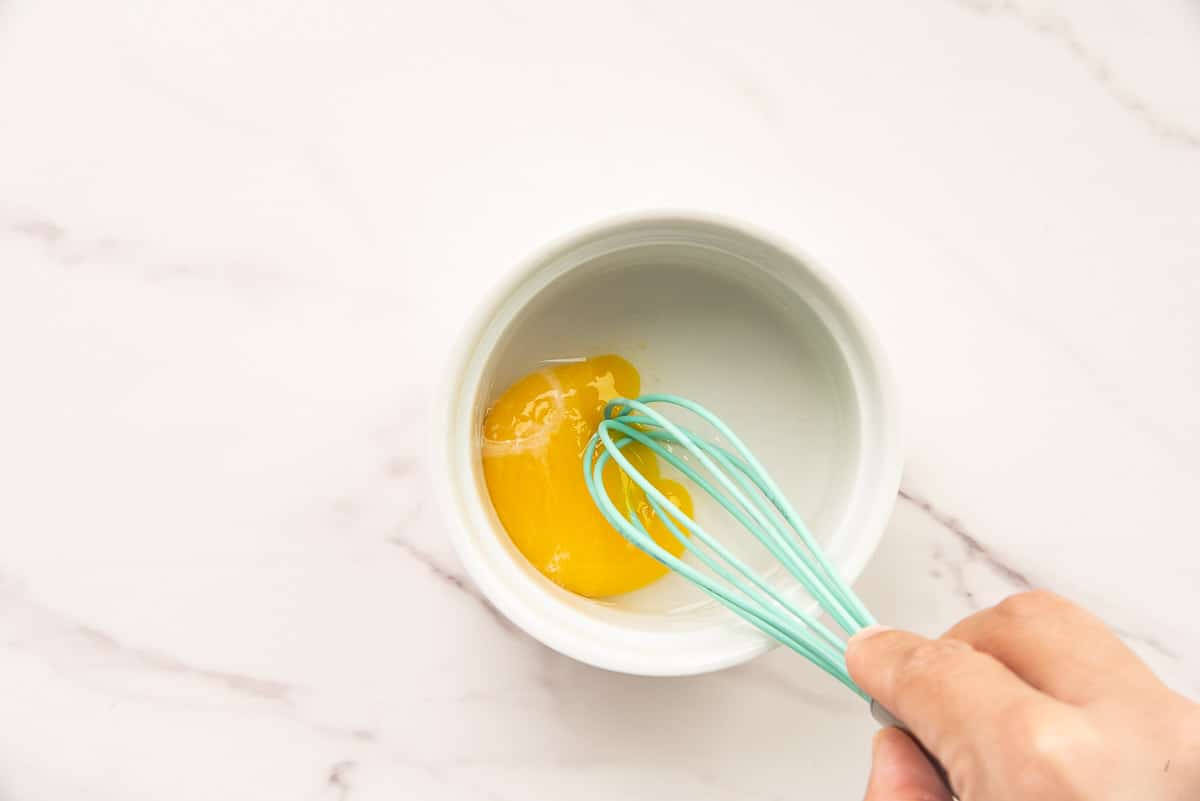
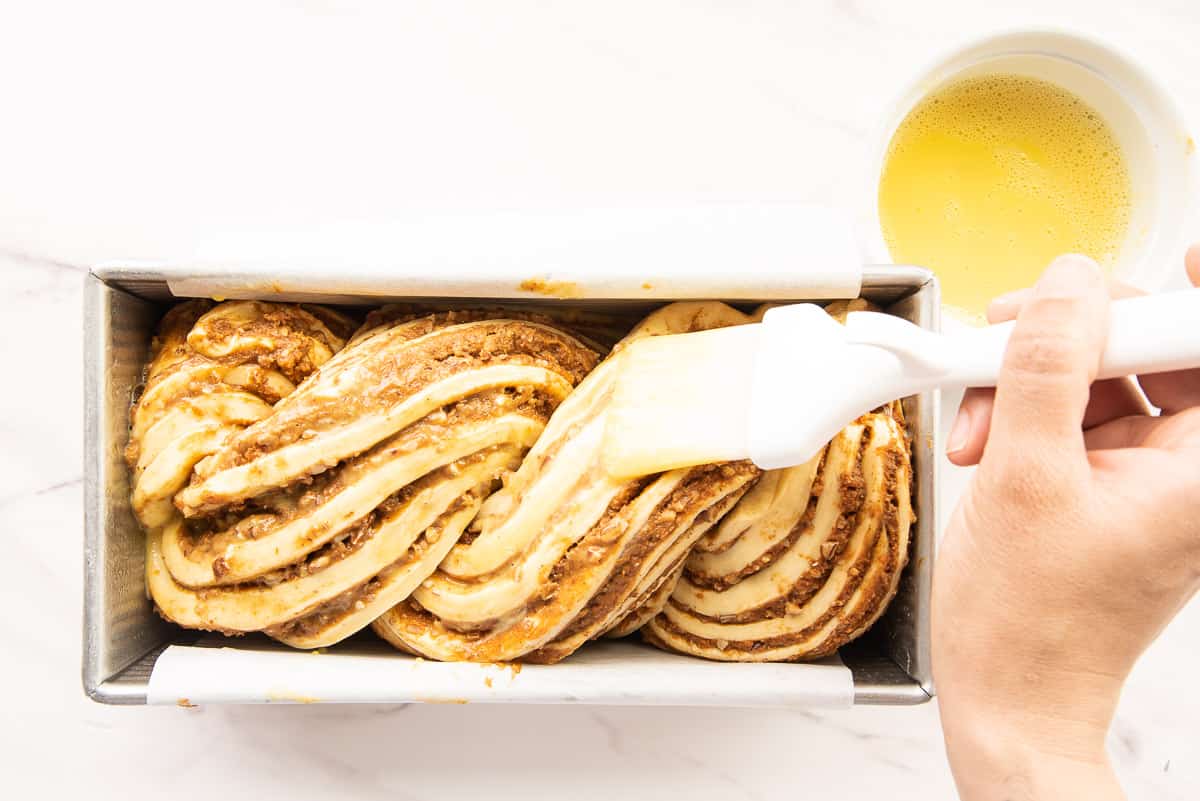
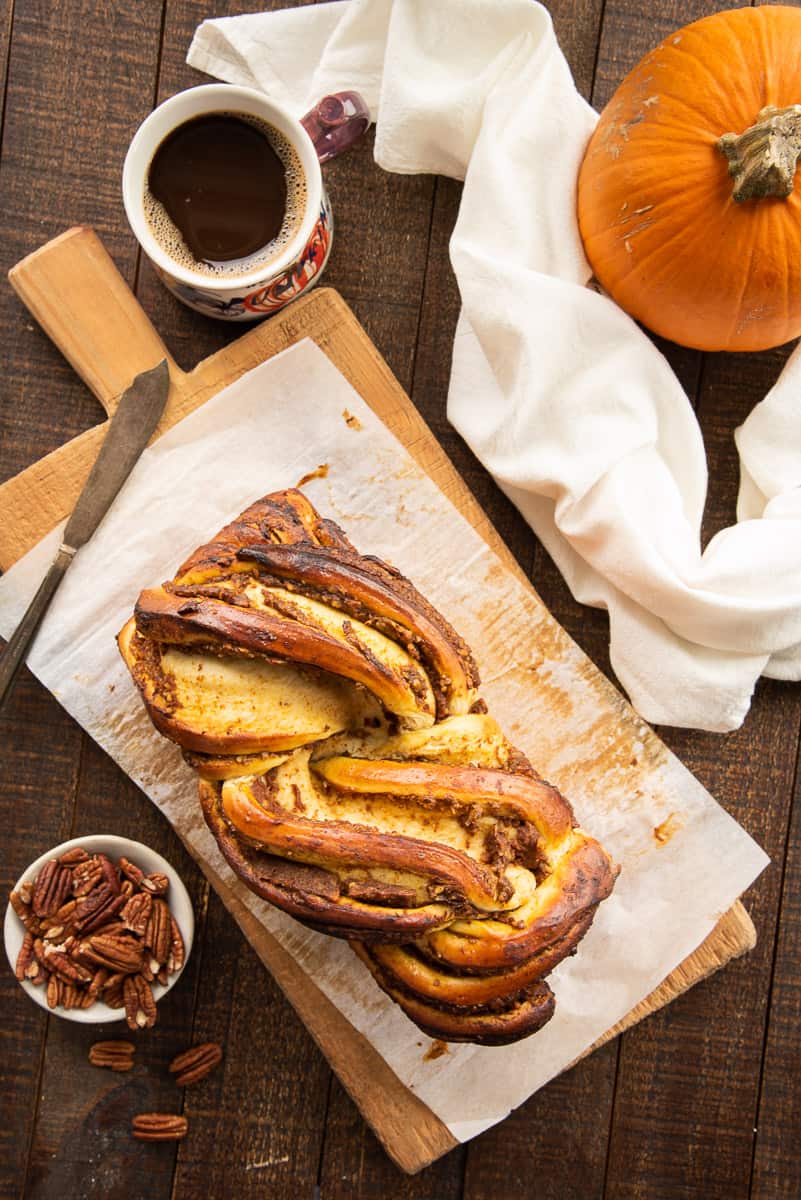
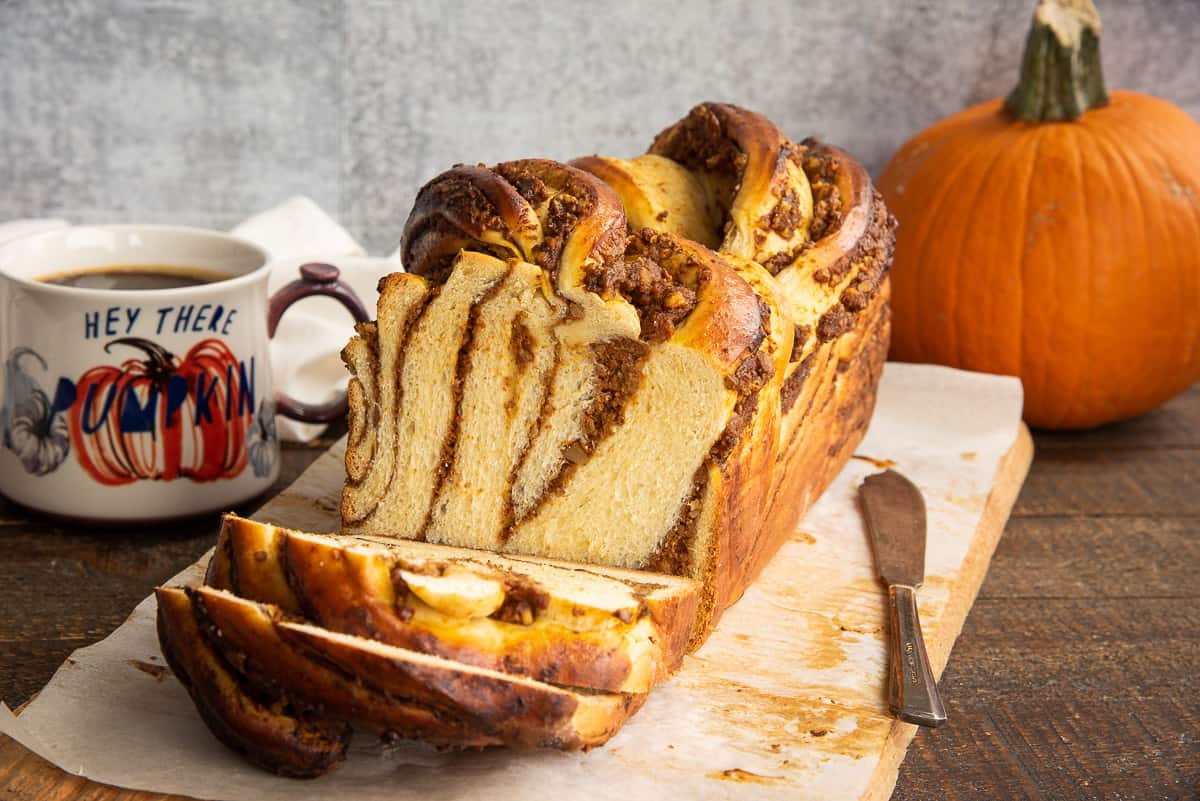
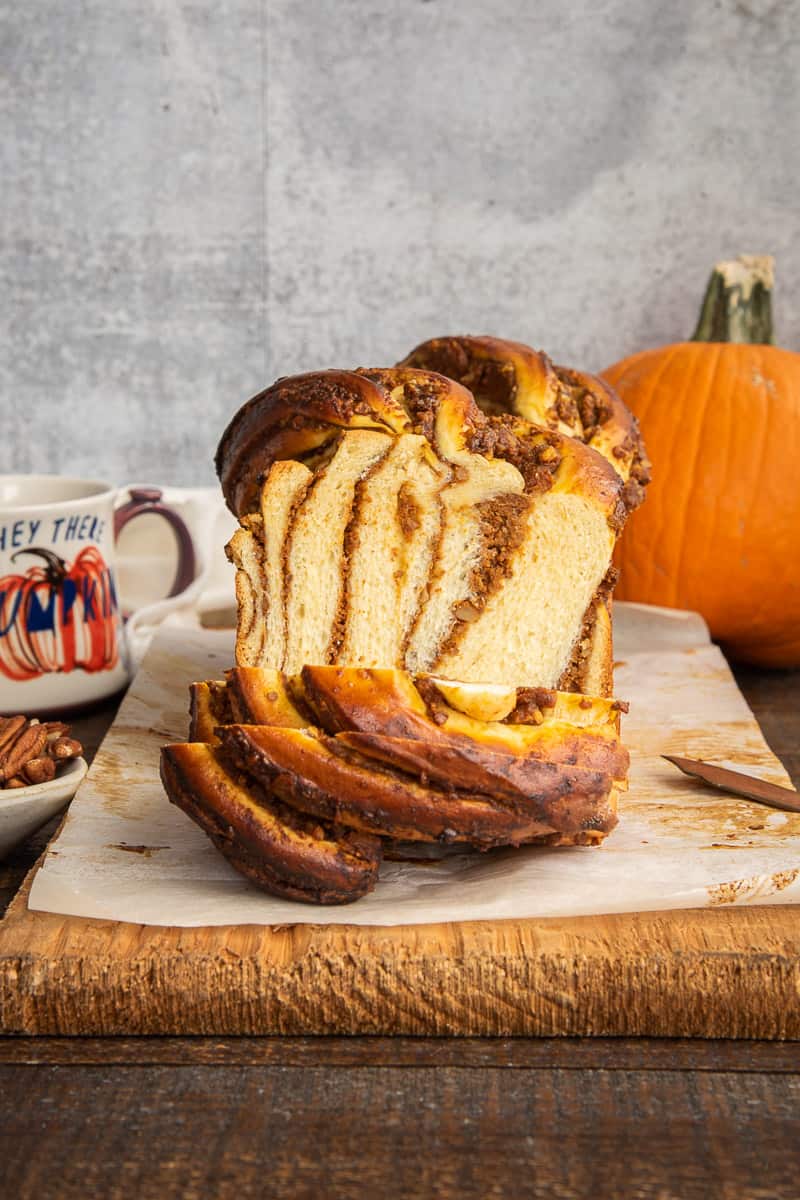
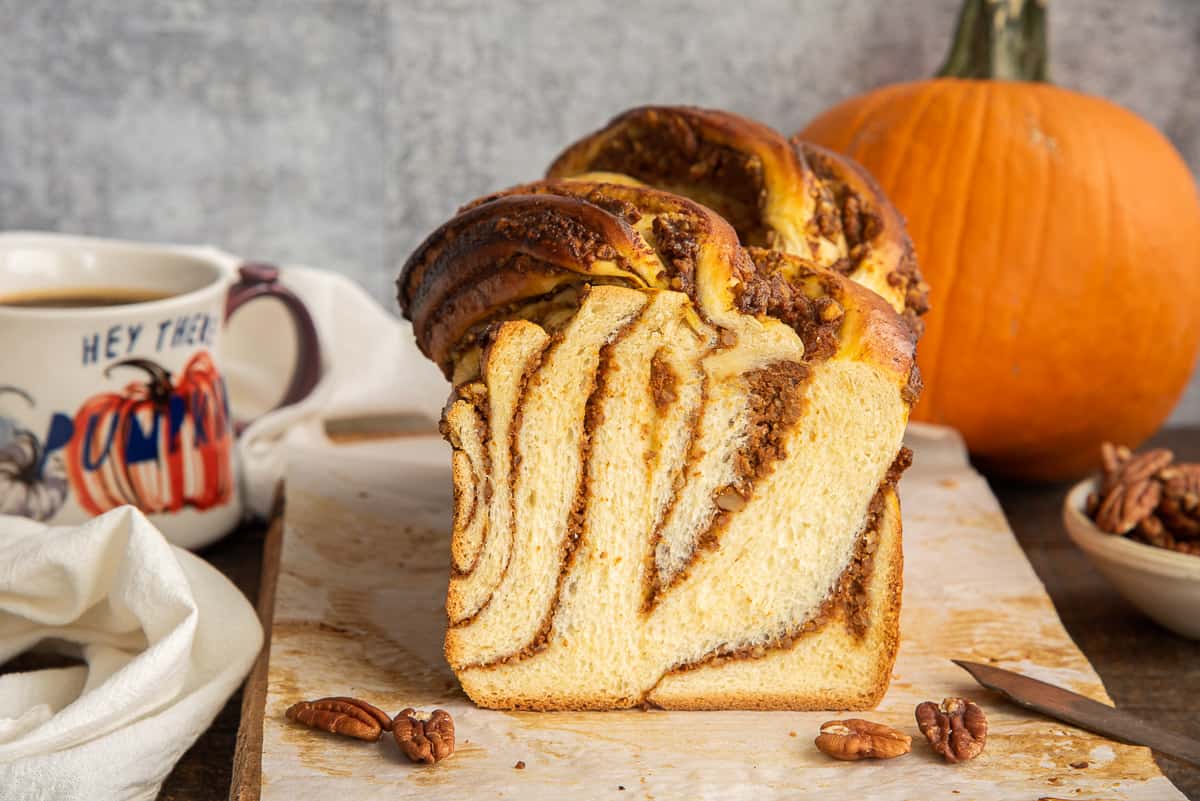
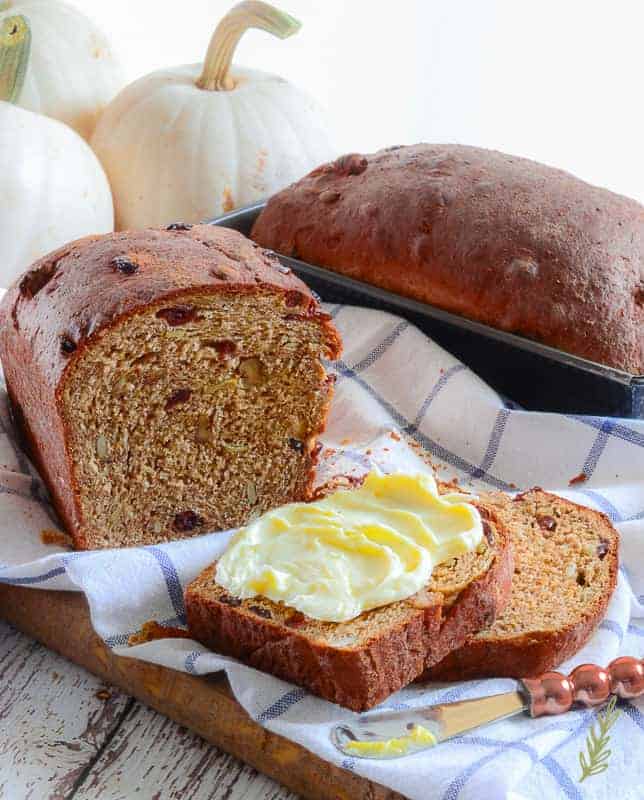
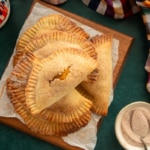
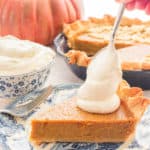
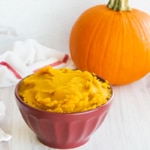
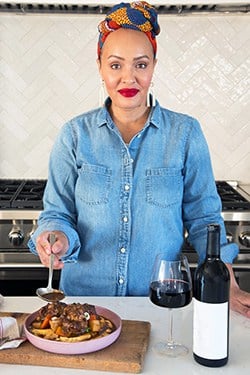
I made a bunch of your recipes for Thanksgiving, this was my favorite to make, and it turned out pretty good for a newbie! The step by step instructions made it easy!
For a newbie to even consider making a babka is huge, so I’m glad you went at it and nailed it.
This was my first attempt at babka and it came out perfectly. Thank you for making it less scary!
You’re welcome, Jazz!